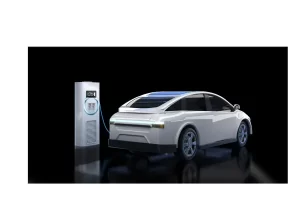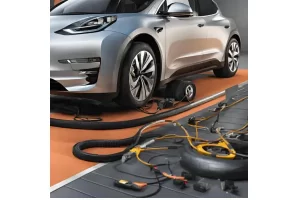As electric vehicles (EVs) continue to gain traction in the automotive market, many consumers are drawn to their environmental benefits, cutting-edge technology, and long-term cost savings. However, one critical aspect that often goes overlooked is the insurance rates associated with these vehicles. With a unique set of characteristics, insuring an electric vehicle can differ significantly from insuring a traditional gas-powered car. This article aims to provide a comprehensive understanding of comparing insurance rates for electric vehicles, helping you make informed decisions to protect your investment.
Understanding Electric Vehicle Insurance
Insurance for electric vehicles is not a one-size-fits-all scenario. Several factors contribute to how premiums are calculated, reflecting the vehicle’s technology, safety features, and overall risk assessment.
Differences from Traditional Vehicles
One of the primary differences in insuring EVs stems from their technology. Electric vehicles are often equipped with advanced technology, including regenerative braking, automatic driving systems, and extensive electronic components. These features not only enhance the driving experience but also complicate the repair process.
Insurance companies assess the cost of potential repairs when determining rates. Given that EVs may require specialized parts and technicians, repair costs can be higher compared to conventional vehicles. For instance, a battery replacement can cost several thousand dollars, a significant factor that insurers take into account when calculating premiums.
Common Misconceptions About EV Insurance
There’s a misconception that insurance for electric vehicles is universally more expensive than that for gas-powered cars. While it’s true that some EVs may carry higher premiums due to their repair costs and advanced technology, many EV models actually qualify for lower insurance rates due to their safety ratings and lower risk of theft. Additionally, several insurance providers offer discounts specifically for eco-friendly vehicles, helping to offset costs.
Factors Influencing Insurance Rates for EVs
When comparing insurance rates for electric vehicles, it’s essential to understand the various factors that can influence the premiums you may pay. Here are some key considerations:
Vehicle Type and Model
The specific make and model of your electric vehicle plays a significant role in determining insurance costs. Popular models like the Tesla Model 3 or the Chevrolet Bolt might have different insurance rates based on their market value and repair costs. Luxury models generally come with higher insurance premiums due to their expensive parts and higher likelihood of theft.
Safety Ratings and Features
EVs are often equipped with advanced safety features, such as automatic emergency braking, lane-keeping assist, and adaptive cruise control. These features can lower the risk of accidents, which may result in reduced insurance rates. Insurers typically reward vehicles with high safety ratings with lower premiums, as they are seen as less risky.
Repair Costs and Parts Availability
Electric vehicles can have specialized components, particularly their batteries and electric motors, which may be more costly to repair or replace. In some regions, finding a qualified technician who can service an EV can also be a challenge. Insurance companies account for these factors when setting rates, as they influence the potential payout in the event of an accident.
Driving Habits and Mileage
Your driving habits also affect your insurance rates. If you use your electric vehicle for long commutes or frequent long-distance travel, you may be at a higher risk for accidents, which can lead to higher premiums. Conversely, if your driving is primarily local with low annual mileage, you may qualify for lower rates.
Geographic Location
Where you live can greatly influence your insurance premiums. Areas with higher traffic congestion, crime rates, or weather-related risks may result in higher insurance costs. In contrast, rural areas with lower accident rates might yield more favorable premiums.
Key Considerations When Comparing Insurance Rates
When it comes to comparing insurance rates for electric vehicles, several factors should be top of mind. Here are some essential considerations:
Researching Different Insurance Providers
Not all insurance companies are created equal, especially when it comes to insuring electric vehicles. Some providers specialize in insuring eco-friendly vehicles, offering tailored coverage options that may not be available with traditional insurers. Look for companies with a strong reputation for customer service and claims handling.
Understanding Coverage Options
Insurance for electric vehicles typically includes standard coverage types, such as liability, collision, and comprehensive coverage. However, there may be additional considerations for EVs, such as:
- Gap Insurance: This can be crucial for new electric vehicles, as their depreciation rate can be higher than traditional cars. Gap insurance covers the difference between what you owe on your car and its actual cash value in the event of a total loss.
- Roadside Assistance: Given the unique nature of electric vehicles, ensure your policy includes roadside assistance that can accommodate potential EV-related issues, such as battery failure or charging emergencies.
Evaluating Discounts and Incentives
Many insurers offer discounts specifically for electric vehicle owners. These can include:
- Green Vehicle Discounts: Some companies provide lower premiums for environmentally friendly cars.
- Low Mileage Discounts: If you drive less than a certain number of miles annually, you might be eligible for reduced rates.
- Bundling Discounts: If you bundle your auto insurance with other policies, such as home or renters insurance, you may save money overall.
Tips for Finding the Best Insurance Rates for Your EV
Finding the right insurance policy for your electric vehicle doesn’t have to be a daunting task. Here are some practical tips to help you navigate the process:
Gathering Quotes from Multiple Insurers
One of the most effective ways to find the best insurance rates is to gather quotes from various providers. This process will help you understand the range of premiums available and identify the best options for your needs. When requesting quotes, be sure to provide accurate information about your vehicle and driving habits to ensure the quotes reflect your actual risk profile.
Leveraging Online Tools and Resources
Numerous online tools can help streamline your search for insurance. Websites like Compare.com, NerdWallet, and The Zebra allow you to compare quotes from multiple insurance companies side by side. These platforms often provide useful insights into the coverage options, discounts, and customer reviews, making it easier to make an informed decision.
Consulting with Insurance Agents
While online tools are helpful, consulting with a licensed insurance agent can provide additional insights. Agents can guide you through the complexities of EV insurance, answer any specific questions, and help you find policies tailored to your needs. They can also inform you about local regulations or incentives for EV owners that you might not be aware of.
Case Studies
To illustrate how insurance rates can vary for electric vehicles, let’s examine a few examples:
Example 1: Tesla Model 3
The Tesla Model 3 is a popular electric vehicle known for its safety features and technological advancements. However, its higher repair costs, particularly for the battery, can lead to increased insurance rates. Average premiums for a Model 3 may range from $1,200 to $1,800 annually, depending on factors like location and driving history.
Example 2: Nissan Leaf
The Nissan Leaf is often considered an affordable entry-level electric vehicle. Its lower market value and relatively inexpensive repair costs can result in lower insurance premiums, typically ranging from $800 to $1,200 per year. Additionally, the Leaf’s solid safety ratings further contribute to its affordability in terms of insurance.
Example 3: Audi e-Tron
The Audi e-Tron is a luxury electric SUV that comes with advanced features but also a higher price tag. Consequently, insurance for an e-Tron may be on the higher end, with premiums averaging between $1,500 to $2,500 annually. While the e-Tron’s safety features may help mitigate some costs, its luxury status and repair costs can still push premiums up.
Conclusion
Comparing insurance rates for electric vehicles is a crucial step for any EV owner or prospective buyer. By understanding the unique factors that influence insurance costs, researching various providers, and taking advantage of available discounts, you can find a policy that suits your needs and budget. As the market for electric vehicles continues to evolve, staying informed about insurance trends will help you make the best choices for your vehicle’s protection.
Call to Action
Have you recently purchased an electric vehicle? Share your experiences with insurance rates in the comments below! If you found this article helpful, consider subscribing for more insights on EV ownership, maintenance tips, and insurance advice. Let’s navigate the exciting world of electric vehicles together!




